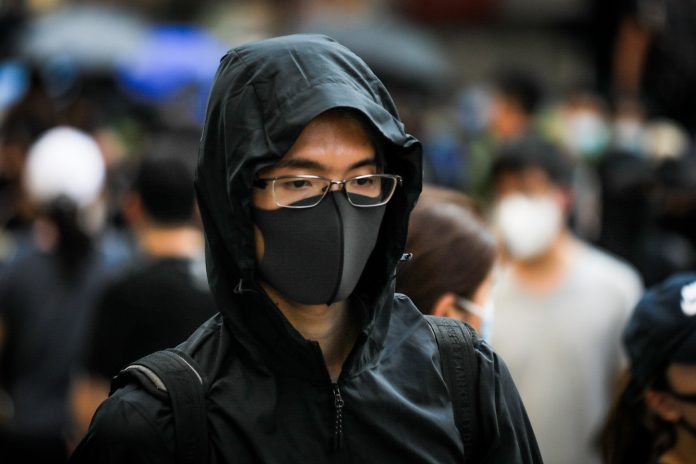Currently, the country has only experienced four deaths: What is the Hong Kong COVID-19 strategy?
As of 20 April, 2020, Hong Kong has 1026 confirmed COVID-19 cases including 602 recovered, and 4 deaths in a population of around 7.5 million.
In contrast, the UK with a population of 66.65 million have suffered 120,067 cases and currently 16,060 deaths. According to policy-influencing research by Imperial College, without any measures of social distancing, 81% of the UK population would become infected with over half a million deaths. If the UK government had installed public health measures as fast as Hong Kong, there could have been a now impossible number of under 6000 deaths. Currently, the research proposes that with appropriate “suppression” strategies, the number of deaths could still be reduced to under 50,000.
Research released by The Lancet on the success of Hong Kong found that contact tracing and population behavioural changes can decisively change the fatal impact of COVID-19.
Firstly: What is an effective reproductive number?
This is the rate of transmission for the virus. It is the average number of people someone who has COVID-19 will probably infect. For Hong Kong, this number has remained at one since early February, so one person can infect one more person as opposed to the higher numbers of infection in countries like Italy, Iran and the UK. Authorities in Hong Kong created their public health measures from late January, 2020.
Secondly: What public health measures did Hong Kong take?
In late January, there were a combination of efforts:
• Intense surveillance for infections: Around 1000 tested every day in early March, both travelers and local community.
• Tracing COVID-19 cases: All people an infected person had seen two days before contracting COVID-19 were quarantined, in holiday camps and new housing estates that were altered into quarantine facilities.
• 14 days quarantine: Anyone coming into Hong Kong from China and all infected countries required to go through this quarantine no matter how they seem.
• Social distancing: Working from home measures were created, school closures were in effect, and large-scale events were cancelled.
In late January, the UK was placed into social distancing measures of lockdown on 23 March, two months after Hong Kong, and without any significant testing or tracing measures.
Professor Benjamin Cowling, from the University of Hong Kong who led the research, said:
“By quickly implementing public health measures, Hong Kong has demonstrated that COVID-19 transmission can be effectively contained without resorting to the highly disruptive complete lockdown adopted by China, the USA, and Western European countries.
“Other governments can learn from the success of Hong Kong. If these measures and population responses can be sustained, while avoiding fatigue among the general population, they could substantially lessen the impact of a local COVID-19 epidemic.”
Thirdly: How did these measures impact individual behaviours?
The Lancet team undertook three surveys in 2020, monitoring the attitudes and ideas of the Hong Kong population. In their March survey, 85% of respondents reported avoiding crowded places and 99% reported wearing face masks when leaving home. This was an increase from the 75% avoidance of crowded places and 61% wearing masks in January. Researchers declare that this exemplifies the level of concern in the population, who are making these decisions to preserve public health.
Finally: How did this change the COVID-19 numbers?
The researchers analysed influenza transmission alongside COVID, to understand how physical distancing measures and changes in population behaviours impacted the similar respiratory virus. The reasoning for looking at influenza numbers was also to understand the impact of public health measures on the “silent transmission” of COVID, which is how this virus spreads in the community from people who have not been diagnosed. For example, scientists at the University of Texas examined 450 cases in 93 Chinese cities to understand the silent transmission rate. They estimated that people who had not yet developed symptoms transmitted around 10% of the cases.
The Lancet research found that after implementation of late January measures, there was a 44% reduction of influenza transmission in February. During the 2009 (H1N1) pandemic in Hong Kong, school closures only managed a 10-15% decrease in influenza transmission, indicating that this current combination of measures is really working to steadily flatten the curve.
Co-author, Dr Peng Wu from The University of Hong Kong said:
“The speed of decline in influenza activity in 2020 was quicker than in previous years when only school closures were implemented, suggesting that other social distancing measures and avoidance behaviours have had a substantial additional impact on influenza transmission.
“As one of the most heavily affected epicentres during the SARS epidemic in 2003, Hong Kong is better equipped to contend with an outbreak of COVID-19 than many other countries. Improved testing and hospital capacity to handle novel respiratory pathogens, and a population acutely aware of the need to improve personal hygiene and maintain physical distancing, put them in good stead.”
Despite the successes of fighting the pandemic, the persecution of human rights advocates continues while the eyes of the world are looking at medical data.
The arrest of 15 democrats on Saturday was a “truly appalling attack on the very heart of Hong Kong’s freedoms, the rule of law and autonomy…” said Sir Malcolm Rifkind, former UK foreign secretary.
In full: https://t.co/K4Fwm8QId9 @hk_watch pic.twitter.com/QvMJB1n2Zs
— Hong Kong Free Press HKFP (@HongKongFP) April 18, 2020
The Lancet Public Health: Study examines how Hong Kong managed first wave of COVID-19 without resorting to complete lockdown is available here.











